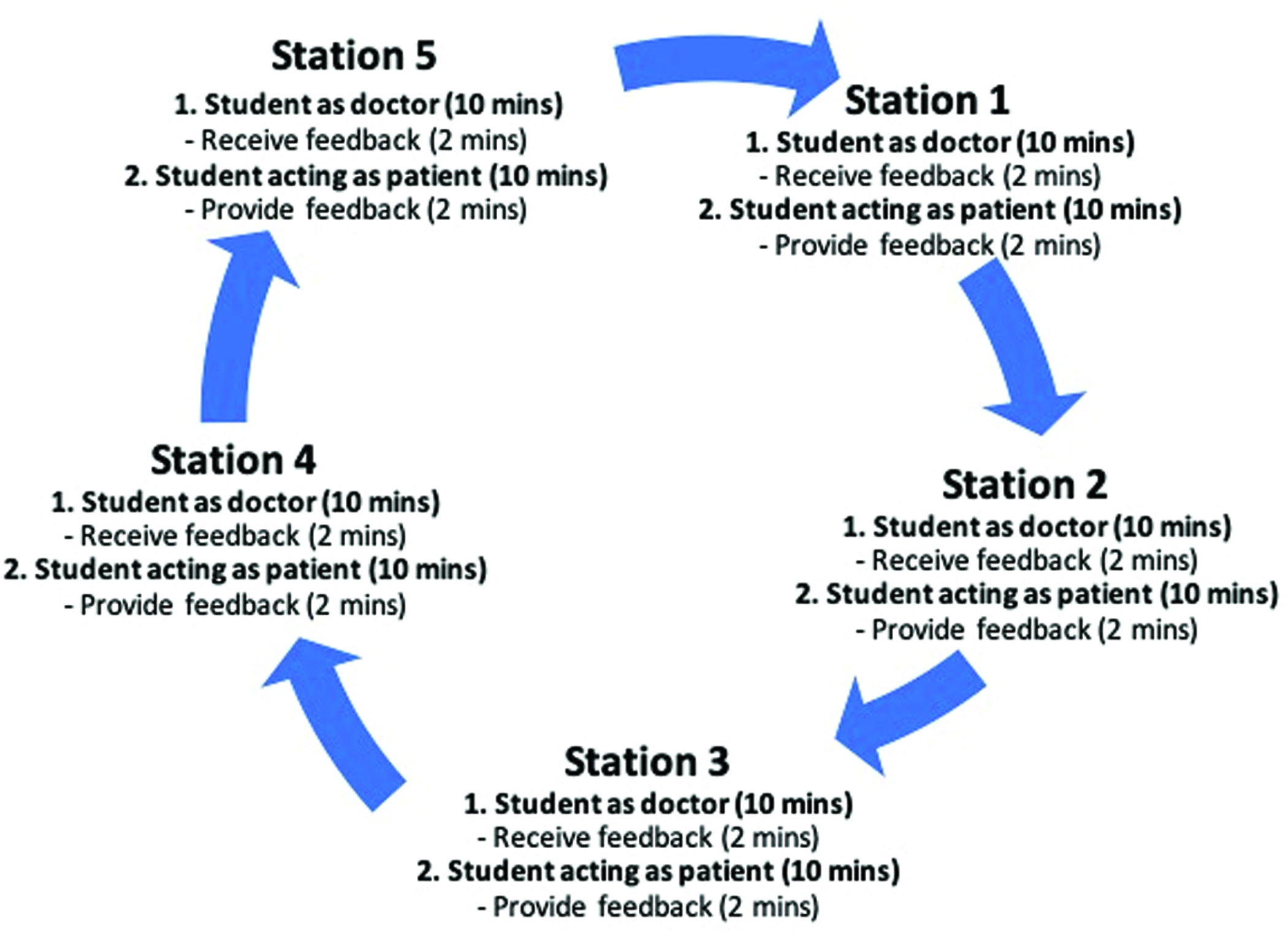
Uncertainty is a prevalent concept within medicine, intrinsic to clinical decision-making. Managing uncertainty can be challenging, especially in specialties (i.e. General Practice) where unclear diagnoses are common. This has resulted in curriculums for such specialities introducing teaching on managing uncertainty [1]. With poor tolerance of uncertainty associated with negative outcomes in medical students [2], there is a strong argument that medical schools need to prepare students to manage uncertainty. Uncertainty simulation cases have been utilized to achieve immersive teaching on uncertainty [3], however this is limited by the resources made available by simulation departments, restricting the potential reach of this transformative learning.
Aim: To deliver an immersive teaching programme for medical students that develops skills in managing uncertainty within a minimal resource environment.
8 teaching sessions with 46 students were facilitated, which involved students rotating through a circuit of 5 simulated General Practice consultation stations. Students firstly performed the station and then acted as the patient for the next candidate in a continuous cycle (Figure 1-A73). Feedback was provided after each station. The station cases introduced elements of uncertainty ranging from diagnostic, management or closing/safety-netting. Feedback was collected after each session assessing confidence in managing uncertainty and GP scenarios.


Students responded positively to the teaching programme, rating its provision of confidence in managing uncertainty and managing GP scenarios (real and OSCE) as >95%. Enjoyment of the sessions was rated at 97% with main aspects being: variety of stations and interactivity. Usefulness of the sessions was rated at 98% with main aspects being: chance to practice, range of cases, receiving feedback. Simulations of GP consultations were rated as highly representative; this was achieved with minimal resources.
This teaching programme developed medical students’ confidence and skills in managing uncertainty. They also felt better prepared for managing patients in a GP setting. Critical to the success of this programme was the enjoyment and perceived usefulness of the teaching, as this improved engagement with the learning outcomes. With the cohort being final year students that were integrating knowledge from previous clinical years, we hypothesize that the usefulness was due to students wanting to focus more on revision and opportunities to develop skills in managing less commonly taught but clinically important abstract concepts, such as managing uncertainty. Further programmes should expand on the simulated environments (ED, medical/surgical on-calls) and managing other clinically important abstract concepts (confrontations, prioritization, errors).
Authors confirm that all relevant ethical standards for research conduct and dissemination have been met. The submitting author confirms that relevant ethical approval was granted, if applicable.
1. O’Riordan M, Dahinden A, Aktürk Z, Ortiz J, Dağdeviren N, Elwyn G, et al. Dealing with uncertainty in general practice: an essential skill for the general practitioner. Quality in Primary Care. 2011;19(3):175–81.
2. Patel P, Hancock J, Rogers M, Pollard S. Improving uncertainty tolerance in medical students: A scoping review. Medical Education. 2022;56(12):1163–73.
3. Scott A, Sudlow M, Shaw E, Fisher J. Medical Education, simulation and uncertainty. The Clinical Teacher. 2020;17(5):497–502.